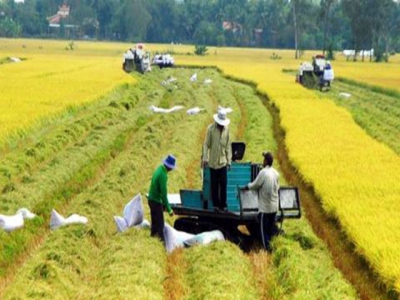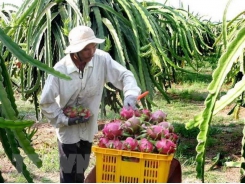Vietnam sells more rice to China, raising concerns

The news that Vietnamese exporters are enhancing rice sales to China has raised big concerns.
Vietnam is one of the biggest rice exporters
A group of Chinese businessmen led by the Chinese food association some days ago arrived in Mekong Delta, the Vietnam’s largest rice granary, to discuss cooperation opportunities in rice trading.
Vietnamese businessmen have shown different reactions to the information.
Some extremists think it would be better to say ‘no’ to any offers from China, saying that Vietnamese should learn lessons from the tricks played by Chinese businessmen.
The rice farming area in Mekong Delta, which provides 90 percent of the country’s total rice output, is 1.5-1.6 million hectares per winter-spring and summer-autumn crop, and 800,000-900,000 hectare per autumn-winter crop.
Nevertheless, according to Pham Van Quynh, former director of the Can Tho City Agriculture Department, unlike other kinds of farm produce, the expansion of rice export to China is beneficial because of the market’s size.
Sharing the same view, a senior local official in the Mekong Delta said the rice sector’s characteristics differ from other kinds of farm produce.
Vietnam’s rice cultivation area has been stable for a long period, despite the ups and downs of the market.
Meanwhile, for other crops, the cultivation area changes regularly depending on the Chinese demand.
“When the Chinese demand for sweets potato, jackfruit, catfish and pork increases, Vietnamese farmers rush to increase the growing areas. When the demand drops, farmers shout for help because of oversupply,” he explained, adding that this would not happen with rice.
“For rice, Vietnam’s cultivation area is stable, while China’s imports have also been stable, at 30 percent of Vietnam’s official rice exports,” he said.
According to the Ministry of Agriculture and Rural Development, the rice farming area in Mekong Delta, which provides 90 percent of the country’s total rice output, is 1.5-1.6 million hectares per winter-spring and summer-autumn crop, and 800,000-900,000 hectare per autumn-winter crop.
Besides China, Vietnam’s rice has been exported to the Philippines, Indonesia, Malaysia, Cuba, Ghana, Hong Kong and Ivory Coast.
Nguyen Thanh Phong, director of Van Loi, also noted that Vietnam would have more advantages when the production is stable and the market expands.
“We will have bigger power in export deals,” he explained, adding that it will not be a big problem for Vietnam if China unexpectedly slashed imports.
Nguyen Minh Toai, director of the Can Tho City Industry and Trade Department, has requested local enterprises to intensify negotiations with China to be able to boost official exports into the country.
At present, the number of local enterprises eligible for selling rice directly to China remains modest.
Có thể bạn quan tâm
Phần mềm

Phối trộn thức ăn chăn nuôi

Pha dung dịch thủy canh

Định mức cho tôm ăn

Phối trộn phân bón NPK

Xác định tỷ lệ tôm sống

Chuyển đổi đơn vị phân bón

Xác định công suất sục khí

Chuyển đổi đơn vị tôm

Tính diện tích nhà kính

Tính thể tích ao hồ



 Chinese firms explore Mekong Delta for rice trade
Chinese firms explore Mekong Delta for rice trade  Tien Giang to expand dragon fruit growing area
Tien Giang to expand dragon fruit growing area